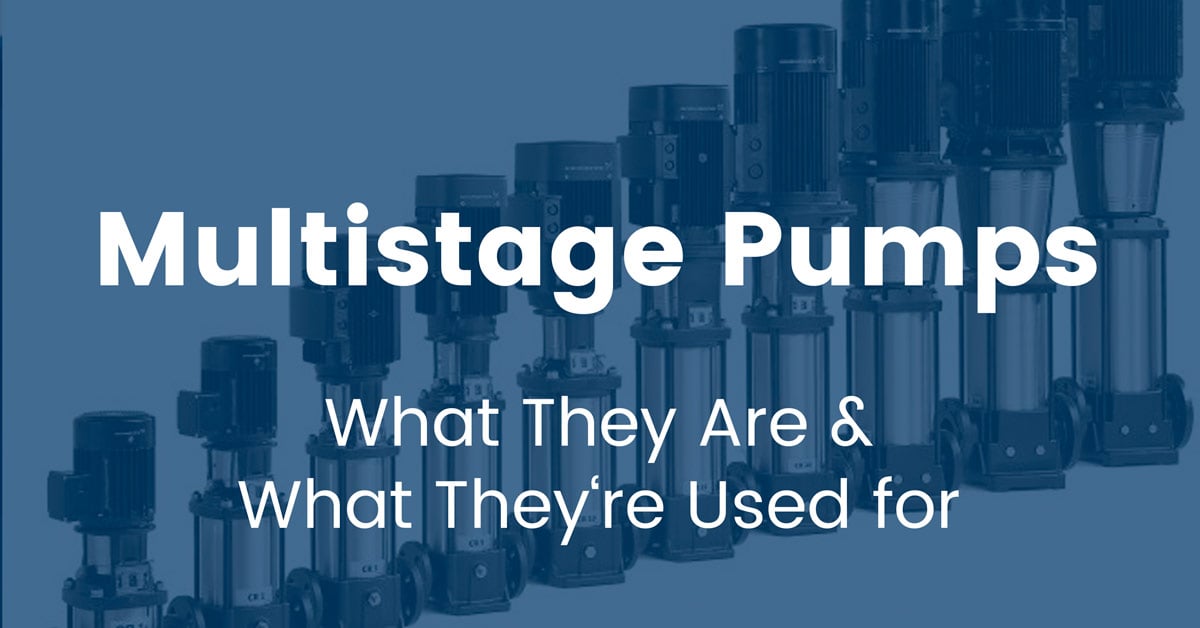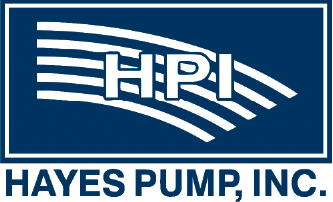Home » Blog » Multistage Pumps: What They Are & What They’re Used For
Multistage Pumps: What They Are & What They’re Used For

The relative simplicity of design has made centrifugal pumps the most commonly available and widely used pump type in the market. Based on the number of impellers, centrifugal pumps can be classified into two categories - single-stage and multistage.
Single-stage pumps have a single impeller. Hence the discharge pressure is a function of the size of the impeller. So, such pumps are a better-suited solution in higher flow, lower pressure installations.
Multistage pumps are capable of providing a flexible range of flow and head and a relatively higher degree of energy efficiency, which makes them an excellent choice for many applications.
What is a Multistage Pump?
A multistage pump is a pump in which the fluid flows through two or more impellers fitted in series. Hence, such a pump will have multiple liquid chambers or stages connected in series. Each stage consists of an impeller, a combination of a diffuser, and return guide vanes, all housed within the same stage casing.
These impellers are installed in series and rotate on a single shaft driven by a power source (usually a motor). The design of multistage pumps allows the fluid to flow through the chambers only in a linear fashion.
How Do Multistage Pumps Work?
After priming the pump, the fluid enters the pump inlet at suction line pressure into the first chamber. The fluid then passes through various impellers sequentially from left to right (or vice versa, depending on the design of the pump). Finally, the fluid leaves at some elevated pressure. Each impeller feeds into the next impeller, and at every stage, the pressure increases further.
The more the number of stages or impellers in a pump, the higher is the final discharge pressure. Although the fluid pressure increases with every stage, the flow range always remains constant for a given RPM.
Types of Multistage Pumps
Multistage pumps are available in many types, as listed below, but the most commonly used ones are vertical and horizontal pumps.
- Horizontal multistage centrifugal pump (above ground)
- Vertical multistage centrifugal pump (above ground)
- Submersible/sump pump types
- Side channel pump
- Horizontal split case pump
- Vertical turbine pump
- Sanitary multistage pump
Benefits of Using Multistage Pumps
- Since multistage centrifugal pumps have multiple impellers, it is capable of increasing the water pressure in a series (i.e., from one stage to the next), thus delivering higher pressures than a similarly sized single impeller pump.
- The head per stage is less, allowing for relatively smaller-sized impellers with tight tolerances, thus reducing leakage loss.
- Multistage pumps also help reduce floor space. Additionally, due to smaller impeller diameters and tighter clearances, these pumps also require less motor horsepower resulting in higher performance and efficiency.
- For pumps of the same discharge pressure output, an increase in the number of stages lowers noise levels than a single-stage pump.
Disadvantages of Multistage Pumps
- Compared to a single-stage pump, the design of multistage pumps is complex and consists of more number of moving components. As a result, the repair and maintenance of these pumps are relatively expensive and demand a higher degree of technical proficiency.
- Also, tighter tolerances do not permit any solids in the fluid flow, which is why multistage pumps are generally used for transporting water or other low viscosity fluids.
- Due to multiple stages in such pumps, there is an increased sensitivity of the pump rotor to external or natural vibrations.
Multistage Pump Applications
A multistage pump finds applications across a varied range of industry verticals requiring the movement of fluids. For example, High-rise buildings require higher pressure to deliver water to their overhead tanks. Multistage pumps are widely used for such applications. They are also often used to either boost the water system’s pressure or continuously circulate water in the system.
Other key applications include:
- High-pressure cleaning
- Irrigation
- Reverse osmosis (RO)
- Fuel delivery
- Oil and gas production
- Mining
- Boiler feeder pumps in power plants
- Pressurizing water to help with firefighting
- Pressurizing water to make snow for use in sports and resorts
Need assistance in selecting a multistage pump for your fluid transportation requirements? Let our expert engineers assist you. As the oldest and largest pump distributor in the Northeast, Hayes has the broadest line of pump products from over 20 different manufacturers.




